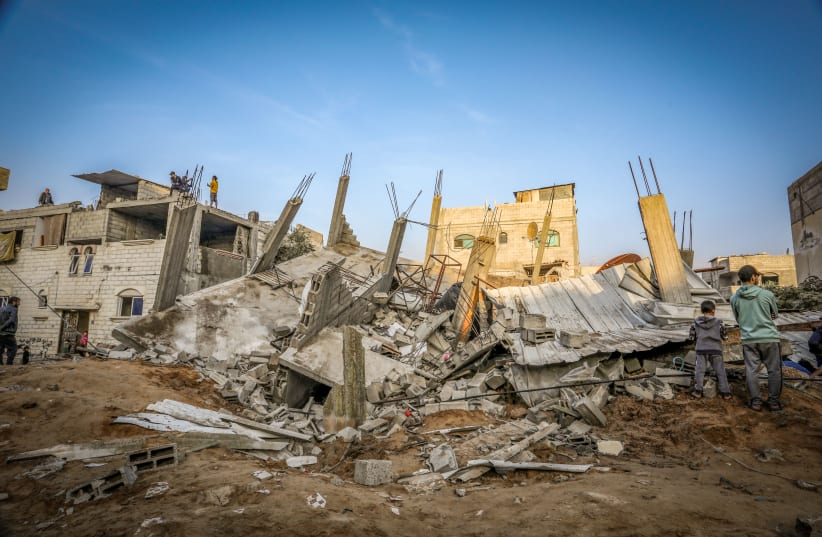I have been active in the peace camp since the 1980s. As an eternal optimist, I always seek the silver lining, find ways to make lemons into lemonades, move away from the abyss, and look for the rainbow. When the dust and ashes of the Hamas-Israel war settle, new opportunities will emerge. Taking advantage of these opportunities requires foresight and daring.
In 2015, Philip Tetlock and Dan Gardner published their book Superforecasting: The Art and Science of Prediction. In this book, the authors offer a useful model to understand the art of decision-making. Tetlock and Gardner argue that good decision-makers need to be good predictors of outcomes of their decision-making processes.
Superforecasters are intelligent and intellectually cautious, humble, and nondeterministic. They are open-minded, with a dragonfly eye to diverse views, pragmatic, and cognizant of the value of checking thinking for cognitive and emotional biases. Superforecasters are relentless, determined to keep at their investigation, reflective, work in teams, and have the ability and willingness to admit error and change course when this is deemed necessary.
Examples of superforecasters are former US president Jimmy Carter and former US Secretary of State Henry Kissinger, both of whom had good teams working for them. Israel and Gaza need superforecasters to take advantage of the opportunity that is now presented to introduce a substantial change in the course of history.
Israel cannot afford to allow Hamas to remain at the helm in Gaza. Hamas does not recognize Israel or its right to exist. On October 7, 2023, it inflicted on Israel the deadliest attack in its history. Excluding the Holocaust, October 2023 is one of the bloodiest days in Jewish history. Hamas, like ISIS, struggles to survive. Israel should make its survival most difficult.
Most Israelis do not wish to return to Gaza or to control Gaza. In 2005, Israel disengaged from Gaza for very good reasons. Disengagement was perceived as necessary due to the demography and security. At that time, there were only 7,500 Jewish settlers in a densely populated Gaza with more than 1.2 million Palestinians, and there were continued Palestinian attacks on IDF soldiers. Then-prime minister Ariel Sharon thought it was in Israel’s interest to disengage from Gaza. Israel needed to secure its future. These good reasons for Israeli disengagement from Gaza have not changed. Israel should not assume prime responsibility for Gaza.
Gaza was part of Egypt until 1967. Egypt shows no interest in assuming responsibility for Gaza and having it back as part of its territory. In 2021, there were 30.6 million people in poverty in Egypt. As many as 60% of Egypt’s 111 million citizens are estimated to be below the poverty line, or close to it. Egypt has no interest in absorbing some two million Palestinians into its territory.
The Palestinian Authority (PA) is too weak and too corrupt to assume sole responsibility for Gaza. While Abbas may wish to do this, he is incapable of even improving the lives of Palestinians in the West Bank [Judea and Samaria]. There is little hope that he will be able to control Gaza. His popularity among the Palestinians has hit rock bottom. Therefore, while the PA should certainly be involved in securing a better future for Gaza and for Israel, it cannot take the lead, nor can it do any of that alone.
Filling the lacunae
Lacunae, however, must be filled. And now there is a chance to shape history for the better. History is largely shaped by courageous leaders who take advantage of circumstances presented before them. Leadership requires vision and daring. We need superforecasters to build this new reality for Gaza and for Israel. Now is the time to think of the “day after” the war. Now is the time to construct a plan that would be put to immediate effect when the war dust is settled.
FOUR SUPERFORECASTERS are needed: one in Washington, one in Jerusalem, one in New York, and one in Riyadh. The leaders of the United States, Israel, the United Nations, and Saudi Arabia should bring this reality together.
The endgame should be to resolve the Israeli-Palestinian conflict. The new vision for Gaza would include the construction of a consortium for the rehabilitation of Gaza. Arab states, such as Saudi Arabia and the Abraham Accords countries, with input from the PA, Egypt, and possibly Jordan, should take the lead in ensuring the safe rebuilding of Gaza. Local Gazans, unaffiliated with Hamas and Palestinian Islamic Jihad (PIJ), will slowly integrate into the new Arab leadership of Gaza. While Hamas and PIJ should be degraded, there is a risk that their platform could be adopted by other, similarly-minded, factions.
The only way to achieve moderation is to have a competitive ideology that is adopted in the context of good governance.
Good governance must be supported by comprehensive rehabilitation efforts to make the Gaza Strip a liveable territory. The UN should organize donations from countries with the goodwill to rehabilitate Gaza.
Tetlock and Gardner argue that a forecast without a time frame is absurd. Forecasting is all about estimating the likelihood of something happening. Therefore, the four leaders should devise a concrete five-year plan, with a realistic timeline for its execution, setting priorities, requirements, and achievable benchmarks to be reached after one year, two years, and so on.
Rebuilding a different Gaza with different priorities in its same geopolitical environment requires time, resources, and careful planning. Israel and the Palestinians should seize this new opportunity that is presented to them.
What is needed are superforecaster leaders. Great leaders have the wisdom to act kindly and boldly for the benefit of others, and never put themselves in the center of attention to impress.
The writer is a professor of politics and founding director of the Middle East Study Centre, University of Hull, UK; global fellow at The Woodrow Wilson International Center for Scholars, Washington DC; and president of the Association for Israel Studies (AIS). X: twitter.com/almagor35

